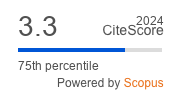Article | Open Access
Differentiation of Rights in the Norwegian Welfare State: Hierarchies of Belonging and Humanitarian Exceptionalism
| Views: | 3447 | | | Downloads: | 2281 |
Abstract: Controlling mobility and borders has become a central, defining feature of the state today. Using the Norwegian welfare state as a case study, I argue that the differentiation of rights depending on status categories is an important way in which the state deals with irregular migration. It is also an integral element of border construction and how mobility is managed. How is the Norwegian welfare state differentiating the rights to work, health care, and economic welfare benefits and through which argumentations does the state legitimate these differentiations? This article argues that the practice of differentiation contributes to establishing hierarchies of belonging and enforces the nexus of welfare rights–migration management. Further, the exclusion of certain categories of people from accessing basic welfare services and, consequently, creating precarious lives, is legitimized by the discourse of humanitarian exceptionalism, through which migrants gain some support outside the welfare state system. This facilitates policies and regulations that are “tough on migration”, and produces the irregular subject as apolitical, a victim, and unwanted. The differentiation of rights and the discourses that the state uses to legitimate these differentiations are keys in the negotiation of who should be entitled to which rights in the future.
Keywords: asylum; borders; differentiated rights; health care rights; humanitarian exceptionalism; irregular migrants; Norway; welfare state
Published:
© Synnøve Bendixsen. This is an open access article distributed under the terms of the Creative Commons Attribution 4.0 license (http://creativecommons.org/licenses/by/4.0), which permits any use, distribution, and reproduction of the work without further permission provided the original author(s) and source are credited.


